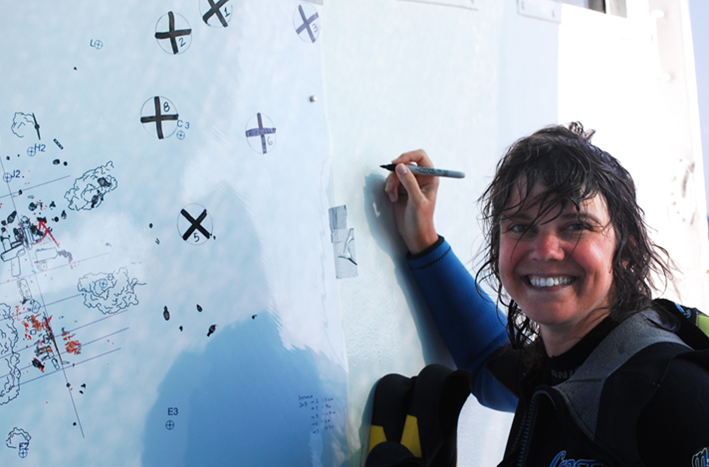Affiliation: Texas A&M University

As a newly transplanted Chicago teenager, Deborah Carlson thought adapting to life in North Carolina would prove insurmountable. Then her parents insisted that she study Latin, which seemed at the time like a fatal blow. But in high-school Latin she discovered the world of Caesar, Ovid, and Pliny. The experience fostered in her a deep love of Greco-Roman antiquity, which she studied at the University of Arizona. After finishing her M.A. in 1995, Carlson taught Roman art and archaeology at Arizona for one year and then decided to pursue a degree in nautical archaeology at Texas A&M University. There, she earned the opportunity to work with George Bass as assistant director of a Greek shipwreck excavation off the coast of Turkey at Tektaş Burnu. Her 2003 appointment as the first female of A&M’s nautical archaeology faculty has given her the chance to train and advise the next generation of students, including a community of vibrant young women. She has assisted in the direction of both terrestrial and underwater excavations in Italy, Greece, and Turkey, and has served as the Archaeological Director of Institute of Nautical Archaeology’s excavation of an early-first century B.C. Roman shipwreck at Kızılburun, Turkey, and as the Assistant Director of INA’s work on a Classical Greek ship at Tektaş Burnu, Turkey. She has received various awards for her work, was the 2003/2004 recipient of the AIA’s Olivia James Traveling Fellowship, and a 2010/2011 AIA Joukowsky Lecturer.
For three summers between 1999 and 2001, underwater excavations off the Aegean coast of Turkey at Tektaş Burnu revealed the remains of a small Greek merchant ship that sank between 440 and 425 B.C. or shortly thereafter. Remains of the ship include a pair of marble ophthalmoi – the only eyes ever found in association with an ancient vessel – and the earliest securely dated examples of lead-filled anchor stocks. The vessel was carrying a primary cargo of wine and pine tar contained in more than 200 transport amphoras and smaller quantities of East Greek pottery. The amphora cargo includes jars from Mende, Chios, and the Samian peraia, but the largest portion is represented by previously unattributed type that can now be assigned to Ionian Erythrae.
At the time the Tektaş Burnu ship was wrecked in the third quarter of the fifth century B.C., Athens was the leading naval power in the Mediterranean, a position the Athenians achieved through the economic exploitation of allied city-states and heavy-handed control over maritime trade. As the only Classical shipwreck ever to be fully excavated in Aegean waters, the Tektaş Burnu ship promises to shed light on local trade networks at a time when Ionia was thought to be mired in an “economic paralysis” brought on by the high cost of Athenian imperialism in the decades following the Ionian Revolt of 499 B.C.
Suggested Bibliography:
Carlson, D.N. 2003. “The Classical Greek Shipwreck at Tektaş Burnu, Turkey,” American Journal of Archaeology 107: 581-600.
See Deborah Carlson's work in the American Journal of Archaeology.